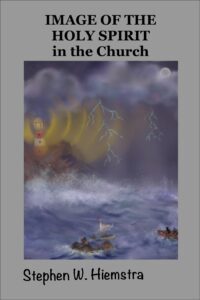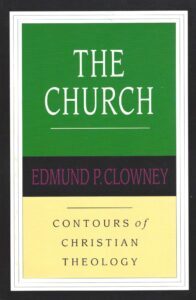Stephen W. Hiemstra's Blog, page 62
July 21, 2023
Links to Stephen. J. Hiemstra Funeral, Sunday July 23, 2023 at 2 P.M.

On July 13th, my father, the other Stephen Hiemstra, passed away after more than a decade of incapacity due to Alzheimer’s disease.
A viewing is scheduled for Saturday, July 22, 2023 from 5 to 8 p.m. at Murphy Funeral Home, 1102 West Broad Street, Falls Church Virginia 22046.
A funeral service will be held at 2 p.m. on Sunday, July 23, 2023 at Lewinsville Presbyterian Church, 1724 Chain Bridge Road, McLean Virginia 22101. The internment and a reception will follow also at the church.
The funeral service will be LIVE-STREAMED by Lewinsville Presbyterian. Church (link).
Dad’s obituary is here (link).
Newsletter: https://mailchi.mp/t2pneuma/links-to-...
The post Links to Stephen. J. Hiemstra Funeral, Sunday July 23, 2023 at 2 P.M. appeared first on T2Pneuma.net.
God’s Promise to Abram

Now the LORD said to Abram,
Go from your country and your kindred and your father’s house
to the land that I will show you.
(Gen 12:1)
By Stephen W. Hiemstra
God’s promise to Abram starts with a command—Lek Leka (לֶךְ־לְךָ֛)—which the King James version translates as: “Get thee out.” The modern translation of “Go” neglects the social context and spirit of the text. For those of modest means, a familiar social image emerges: A kid comes of age and gets kicked out of the house. The text leads us to believe that Abram is encouraged, not kicked, to leave the comfort and security of home with a series of inducements:
“And I will make of you a great nation, and I will bless you and make your name great, so that you will be a blessing. I will bless those who bless you, and him who dishonors you I will curse, and in you all the families of the earth shall be blessed.” (Gen 12:2-3)
Because Abram was already seventy-five years old at this point (Gen 12:4), we do not normally think of this as a coming of age story. However, because his father Terah died at age 205 (Gen 11:32), compared with his father Abram is not yet middle age.
Ruminations
A coming of age context here is important because Abram must learn to lead his family in a stressful and unfamiliar context. His father, Terah, sets out to leave “Ur of the Chaldeans to go into the land of Canaan” (Gen 11:31) with son, Abram, and grandson, Lot, (and their wives) after Abram’s brother Haran died in Ur. When they traveled to Haran, presumably Haran’s home, Terah also died.
We are not told how or why the two men in the family died—Was it war, disease, famine?—but we can surmise that Abram’s role as leader of the family is both sudden and mixed with tragedy. No one in their right mind would abandon the securities of family, tribe, and country without a strong inducement. Did God approach Abram as he struggled with a context of loss and anxiety? We are not told, but if Abram were leading a refugee family out of a war-torn land, then the social context here would make more sense, much like the kid kicked out of the house. One way or another, Abram’s heart is open to the Holy Spirit’s leanings and he goes.
Destination More Than a Place
If we try to intuit the role of the Holy Spirit in Abram’s life, two condition need to be met. First, the Holy Spirit needs to be an active agent, like the Apostle John’s vision of the Paraclete (John 14:26). Second, Abram’s life needs to be challenging, if a helper is to be any use.
What we see in the Genesis account is that Abram’s life is full of challenges. Abram’s story begins with the command to go to Canaan (Gen 12:1). The seventeen-hundred-mile journey from Ur of the Chaldeans to Jerusalem by foot would take around three months. Once he arrives, he finds the land inhabited by Canaanites. Abram builds alters at Shechem and Bethel, and, then, on account of a famine, he departs for Egypt (Gen 12:5-10).
What we see is a long journey marred by outward and inward obstacles. Outwardly, Abram cannot take possession of the Promise Land because it is already occupied by previous tenants. Inwardly, Abram’s wife, Sarah, is barren, which the text discloses even as she introduced (Gen 11:30)—How can Abram’s children increase to become a great nation? Abram’s faith needs to grow, if God’s blessing is to come within reach. This is why it is helpful to interpret Abram’s story as a coming of age narrative mentored by the Holy Spirit.
God’s Promise to Abram
Also see:
The Face of God in the Parables
The Who Question
Preface to a Life in Tension
Other ways to engage online:
Author site: http://www.StephenWHiemstra.net
Publisher site: http://www.T2Pneuma.com
Newsletter: https://bit.ly/Rem_July23 , Signup
The post God’s Promise to Abram appeared first on T2Pneuma.net.
July 18, 2023
Clowney Surveys Ecclesiology

Edmund P. Clowney. 1995. The Church. Downers Grove: InterVarsity Press.
Review by Stephen W. Hiemstra
Within the next decade the institutional church will celebrate its two-thousandth year anniversary. I know of no committees established to organize this celebration. While the anniversary is real, the precise date of Pentecost is unclear and the church’s organizational continuity is more organic than concrete. The church consists of those called together by God, not those under a particular roof or creedal banner. The best way to celebrate this anniversary is to continue worshipping God as Christians have for two thousand years.
Introduction
Edmund P. Clowney’s book, The Church, is a theological text written for seminary students that attempts to survey opinion about ecclesiology at a time when there is a lot of background noise on all church-related topics (7). Yet, Clowney sees the church as part of God’s revelation at odds with the “secular mindset that is outraged by the very notion that religion is a matter of fact rather than feeling or opinion.” (9) The cultural dismemberment that he observed in 1995 (13) seems well-advanced now in 2023. The biblical definition of the church, according to Clowney, is: “The people of God, the assembly and body of Christ, and the fellowship of the Holy Spirit.” (28)
The Church is part of the Contours of Christian Theology series edited by Gerald Bray and published by InterVarsity Press.
Background and Organization
Edmund Prosper Clowney (1917–2005) “earned a Bachelor of Arts from Wheaton College in 1939, a Bachelor of Theology from Westminster Theological Seminary in 1942, a Master of Sacred Theology from Yale Divinity School in 1944, and a Doctor of Divinity from Wheaton College in 1966.” At the time of his writing, Crowney was professor emeritus at Westminster Theological Seminary.
Crowney writes in eighteen chapters:
The Colony of Heaven
The People of God
The Church of Christ
The Fellowship of the Spirit
The Gift of the Spirit
‘I believe…the Holy Catholic Church’
Holiness and Catholicity
The Marks of the Church
The Service of Worship
The Nurture of the Church
The Mission of the Church
The Church in the World’s Cultures
The Kingdom, the Church and the State
The Structure of Christ’s Church
The Ministry of Women in the Church
The Gifts of the Spirit in the Church
The Gift of Prophecy in the Church
The Sacraments (5).
These chapters are preceded by series and author prefaces and definitions of abbreviations, and followed by notes and several indices.
Marks of the Church
One always looks to see what an author presents that is fresh and new. Perhaps nothing stands out about Clowney’s writing more than the constancy of crisis that one sees in church history. Radical change in the human spirit always poses a crisis and evokes push back. Peace and quiet are the hallmarks of a mausoleum, not a church.
Citing the Scot’s confession, Clowney writes: “Three marks were defined in distinguishing a true church of Christ: true preaching of the Word; proper observance of the sacraments; and faithful exercise of church discipline.” (101) He goes on: “If the church is identified by the Word and the sacraments, church discipline uses the keys of the kingdom to maintain that identity.” (105)
For Presbyterians, Clowney sees erosion of commitment and adherence to the authority of scripture being a key problem in maintaining the identity of the church. (105-106) This insight suggests that the slippery slope is more of a problem than an outright crisis, much like the frog that cannot sense the gradual rise of temperature in a heating pot.
Clowney observes that: “The church is called to serve God in three ways: to serve him directly in worship; to serve the saints in nurture; and to serve the world in witness.” (117)
Assessment
Edmund P. Clowney’s book, The Church, provides a helpful and accessible reminder of the many aspects of church history and life from the perspective of an observer in the United Kingdom. While his book dates from the 1990s, the issues raised have only become more urgent in more recent years. The survey form of his text serves well to offset focus on the more parochial issues of the day.
Footnotes
https://en.wikipedia.org/wiki/Edmund_....
Clowney Surveys Ecclesiology
Also see:
Books, Films, and Ministry
The Who Question
Preface to a Life in Tension
Other ways to engage online:
Author site: http://www.StephenWHiemstra.net
Publisher site: http://www.T2Pneuma.com
Newsletter: https://bit.ly/MarkT_June23 , Signup
The post Clowney Surveys Ecclesiology appeared first on T2Pneuma.net.
July 17, 2023
Words: Monday Monologues (podcast), July 17, 2023

By Stephen W. Hiemstra
This morning I will share a prayer and reflect on the Authors and Words. After listening, please click here to take a brief listener survey (10 questions).
To listen, click on this link.
Hear the words; Walk the steps; Experience the joy!
Words: Monday Monologues (podcast), July 17, 2023
Also see:
The Face of God in the Parables
The Who Question
Preface to a Life in Tension
Other ways to engage online:
Author site: http://www.StephenWHiemstra.net
Publisher site: http://www.T2Pneuma.com
Newsletter: https://bit.ly/Rem_July23 , Signup
The post Words: Monday Monologues (podcast), July 17, 2023 appeared first on T2Pneuma.net.
July 16, 2023
Prayer of Words for Words

By Stephen W. Hiemstra
Almighty God, Author of Creation, Holy Spirit,
All praise and honor, power and dominion, truth and justice are yours because you have used words to create the universe and taught them to us.
Forgive us when we persist in passivity, preferring darkness to light, and neglect to learn the words of our salvation.
Thank you for the witness of the saints, the gift of holy scripture, and the promise of a bright future with you.
In the power of your Holy Spirit, create in us a clean heart, O God, and renew a right spirit within us. Cast us not away from your presence, and take not your Holy Spirit from us. Restore to us the joy of your salvation, and uphold us with a willing spirit. (Ps 51:10-12)
In Jesus’ precious name, Amen.
Prayer of Words for Word
Also see:
The Face of God in the Parables
The Who Question
Preface to a Life in Tension
Other ways to engage online:
Author site: http://www.StephenWHiemstra.net
Publisher site: http://www.T2Pneuma.com
Newsletter: https://bit.ly/MarkT_June23 , Signup
The post Prayer of Words for Words appeared first on T2Pneuma.net.
July 14, 2023
Authors and Words

And God said, Let there be light,
and there was light.
(Gen 1:3)
By Stephen W. Hiemstra
If a crisis of authority—a replay of the reformation—is the core problem facing the church, then the Old Testament experience provides insight. Biblical faith starts with taking words seriously—God created the heavens and the earth with words—in a world where spin-doctors, advertisers, and half-truths undermine our confidence in what gets said.
Not incidentally, the root of the word authority is author—an originator or creator of something. The New Testament makes this point several times when it describes Jesus as the “author and finisher of our faith” (e.g. Heb 12:2, KJV). The Greek word in view—archenon (ἀρχηγὸν, BDAG 1154)—can mean: 1. one who has a preeminent position, leader, ruler, prince 2. one who begins something or 3. one who begins or originates. In a crisis of authority, one naturally defers to an authority.
Creation Language
Consider the third verse of Genesis cited above. The verse appears straightforward. That is, until you start to reflect on what is said.
The verse consists of three phrases: “And God said,” “Let there be light,” and “and there was light.” In English, the first phase is simply an attribution, as in a dialogue telling us who is talking. The second phase is an invitation. The third is a simple declaration. We are not told how the invitation morphs into a declaration.
The original Hebrew text is no help in understanding these three phases. Phases two and third state exactly the same thing: Be light and [there] be light (יְהִ֣י א֑וֹר וַֽיְהִי־אֽוֹר).
The grammatical description in my text (BDB 3570) describes the second phase as an apocopated jussive (abbreviated command), but that is likely an inference taken from the Greek translation in the Septuagint that utilizes an imperative form (γενηθήτω φῶς καὶ ἐγένετο φῶς). If it is a jussive, then why does not the text simply read: God commanded that light be created? It could easily but it does not.
The grammatical translation in English, as in Greek, expresses unusual politeness, as a parent might employ with a child and the subtext is ethical: What God says; God does. This point is underscored in verse four: “And God saw that the light was good.” (Gen 1:4). This form is repeated over and over in the creation accounts, which suggests emphasis and draws attention to the importance of words in the text.
Because we are created in the image of God and want to reflect his image, if God treats words as important, then we should too. This is context where we later witness the creation of Adam and Eve.
Words and Actions
What if we assume a promise, not an imperative, in translating the third verse in Genesis: Be light and [there will] be light? Grammatically, this is not a stretch but only an interpretation no different than that expressed in an imperative.
Jenson (1973, 2) writes: “A promise pose a future in a very particular way: as gift.” Creation is clearly a gift for Adam and Eve, And, by inference, for us. Jenson (1973, 8) interprets the Gospel as promise and views it as the grammatical anthesis of law.
“Because I will do such and such, you may await such and such. The pattern is ‘Because…, therefore…,’ the reverse of ‘If…,then…’ Here the future is opened independent of any prior condition…it grants a future free from the past.”
Viewing creation as a promise rather than an invitation is interesting thought experiment for two reasons. First, the hearer participates actively in the future event—a formative process—rather than remaining a passive observer of the past. Second, it permits us to observe the agent of formation, the Holy Spirit.
Unfortunately, treating the imperative as a promise is less helpful in discussing parallel verses in later creation events, suggesting that the current invitation translation is preferred. Nevertheless, we engage in thought experiments to tease out insights that deepen our understanding of the text, a kind of meditative exercise not unlike lectio divina (Peterson 2006, 91).
Other Promises
The biblical template for faith in an individual is a coming of age story that begins when Abraham acts on God’s promise (Gen 12:1-3). The biblical template for faith in a community begins with a promise to Moses: Deliverance, freedom, and land (Exod 3:7-10). Formation occurs in accepting and sticking with the journey under guidance of the Holy Spirit.
The Bible takes words seriously, yet the God of the Bible does not prefer any particular human language. The church could be defined as a community where people listen both to God and to one another.
References
Jenson, Robert W. 1973. Story and Promise: A Brief Theology of the Gospel About Jesus. Philadelphia: Fortress Press.
Peterson, Eugene H. 2006. Eat This Book: A Conversation in the Art of Spiritual Reading. Grand Rapids: Eerdmans.
Authors and Word
Also see:
The Face of God in the Parables
The Who Question
Preface to a Life in Tension
Other ways to engage online:
Author site: http://www.StephenWHiemstra.net
Publisher site: http://www.T2Pneuma.com
Newsletter: https://bit.ly/MarkT_June23 , Signup
The post Authors and Words appeared first on T2Pneuma.net.
July 11, 2023
Hauge Explains Screenwriting

Michael Hauge. 2011. Writing Screenplays that Sell: The Complete Guide to Turning Story Concepts into Movie and Television Deals. New York: Harper Collins Publishers.
Review by Stephen W. Hiemstra
When I worked on research as a government economist, I started new projects by visiting with someone on staff who had previously worked on the subject. Almost no projects were wholly new and important projects were often seeded to multiple individuals in completing divisions. If there was a well-established framework for looking at the subject, it was better to learn about it upfront and save later embarrassment. It is no different in genre writing and writing for film.
Introduction
Michael Hauge’s book, Writing Screenplays that Sell, reiterates my experience as an economist in the Hollywood context: “Hollywood does have standards and it is possible to know what those are and write screenplays that meet them.” (xxvii). It is one of the ten principles that he lays out in his goal of destroying ”those common myths of failure and [replacing] them” with his principles (xxvi).
Hauge’s other nine principles are:
“Anyone with talent who sticks around long enough will succeed.”
“What’s import is whether you want to write a screenplay.”
“Your objective should not to learn creativity, but to stimulate it.”
“The foundation of any successful film will always be a good, well-written story.”
[cited above]
“Commerciality and artistry are not mutually exclusive.”
“The screenwriting process can be broken down into a proven series of steps and stages…”
“You can be a working screenwriter and live anywhere.”
“You can launch a career as a screenwriter even if you don’t know anyone within a thousand miles of southern California.”
“You can make a bundle of money doing all of this.” (xxvi-xxvii)
The underlying theme in all of this is that screenwriting may be difficult, but it does not have to be impossible, if you adhere to industry expectations.
Hauge writes for screenwriters in early stages of their career. He focuses on screenwriting for “mainstream film and television: narrative feature films that are distributed nationally, prime-time (network and cable) TV movie and episodic series, and short fictional films.” (xxix) The sales aspect of his title implies that a common thread running through his exposition is his focus on writing commercially viable scripts and selling them.
Background and Organization
Michael Hauge received his Bachelor’s degree from University of Oregon and a Master’s degree from the University of Georgia. He lists his occupations as story consultant, author, mentor, and speaker.
Hauge writes his book in twelve chapters divided into four parts:
PART ONE: DEVELOPING THE STORY
The Goal of the Screenwriter
Story Concept
Character Development
Theme and Character Arc
Structure
PART TWO: WRITING THE SCREENPLAY
Scene Writing
Exceptions to the Rule
An Analysis of Avatar
PART THREE: THE BUSINESS OF SCREENWRITING
Marketing Yourself as a Screenwriter
The Screenwriter’s Deal
PART FOUR: THE COMMITMENT TO SCREENWRITING
The Life of the Screenwriter
The Power of Screenwriting (xv-xix)
These chapters are preceded by two introductions and a discussion of the audience. They are followed by frequently asked questions, a sample treatment, an index, and an about the author statement.
Writing the Screenplay
The writing advice portion makes up roughly two-thirds (64 percent, 227/351 pages) of the Hauge’s text, which makes such advice a good place to start a review. Hauge reminds the reader frequently that a screenplay consists of only three components: action, description, and dialogue (e.g.139, 140). However, he does not dwell on the mechanics of writing. Quite the contrary, Hauge writes that style does not matter in a screenplay—what goes on the page must appear on the screen.
Hauge writes: “All filmmakers…have a single goal: to elicit emotion in an audience.” (3). Pursuing this goal, the screenplay seeks to: “Enable a sympathetic character to overcome a series of increasingly difficult, seemingly insurmountable obstacles to achieve a compelling desire.” (4) The components (stages) of a screenplay are accordingly: the story concept, the characters, the plot structure, and the scenes. (5)
Hauge encourages his readers to watch movies. For compelling films, he suggests watching them two or three times to analyze what makes them tick (10-13). The idea is that before you can systematically construct something, you really need to understand the construction building blocks. Can you image building a house, but forgetting to pour a foundation or framing a wall without accounting for the electrical wiring? I suspect from Hauge’s presentation that most successful screenwriters outline their work, even if they masquerade during daylight hours as pantsers.
Writing Scenes
Many writing books assume that the reader knows what a scene is and how to write one, which can lead to some serious head scratching. By contrast, Hauge stands out for having written forty-five pages on writing scenes. He offers this checklist for a successful scene:
“How does the scene contribute to the hero’s outer motivation?”
“Does the scene have its own beginning, middle, and end?”
“Does the scene thrust the reader into the following scenes?”
“What is the character’s objective in the scene?”
“What is each character’s attitude in the scene?”
“Does the scene contain action, and not just dialogue?”
“Does the scene serve multiple functions?” (164-166)
Hauge offers numerous writing tips that I have not seen elsewhere. For example, do your minor characters interact with each other, not just the main character? (179) This insight impressed me because gossip between minor characters can be used to fill in backstory on your main character. Who doesn’t enjoy eavesdropping on gossip?
Assessment
Michael Hauge’s book, Writing Screenplays that Sell, is a must read for aspiring screenwriters and an interesting counterpoint for novelists who rely too heavily on description. While I have focused on Hauge’s comments on writing, aspiring screenwriters also need to know about and be responsive to the commercial side of screenwriting. The intense commercial awareness required of screenwriters distinguishes screenwriting from novel writing, something Hauge does a good job of hammering into his readers.
Footnotes
https://en.wikipedia.org/wiki/Michael_Hauge. https://storymastery.com.
Hauge Explains Screenwriting
Also see:
Books, Films, and Ministry
The Who Question
Preface to a Life in Tension
Other ways to engage online:
Author site: http://www.StephenWHiemstra.net
Publisher site: http://www.T2Pneuma.com
Newsletter: https://bit.ly/MarkT_June23 , Signup
The post Hauge Explains Screenwriting appeared first on T2Pneuma.net.
July 10, 2023
Challenge: Monday Monologues (podcast), July 10, 2023

By Stephen W. Hiemstra
This morning I will share a prayer and reflect on the Core Challenge. After listening, please click here to take a brief listener survey (10 questions).
To listen, click on this link.
Hear the words; Walk the steps; Experience the joy!
Challenge: Monday Monologues (podcast), July 10, 2023
Also see:
The Face of God in the Parables
The Who Question
Preface to a Life in Tension
Other ways to engage online:
Author site: http://www.StephenWHiemstra.net
Publisher site: http://www.T2Pneuma.com
Newsletter: https://bit.ly/MarkT_June23 , Signup
The post Challenge: Monday Monologues (podcast), July 10, 2023 appeared first on T2Pneuma.net.
July 9, 2023
Challenge Prayer

By Stephen W. Hiemstra
Almighty and Loving God,
All praise and honor, power and dominion, truth and justice are yours because you sent Christ to die for our sins and raised him from the dead.
We confess that by ourselves, we are lost and broken, unable to contend with the spirits of our day. Cast out the spirits that afflict us, cleanse our hearts, and redeem us for you alone.
We give thanks for the newness of the morning sun, the work that you have given us, and the comfort of family and church. Cast out the spirits that afflict us, cleanse our hearts, and redeem us for you alone.
In the power of your Holy Spirit, draw us to yourself. Open our hearts, illumine our thoughts, and strengthen us in your service.
In Jesus’ precious name, Amen.
Challenge Prayer
Also see:
The Face of God in the Parables
The Who Question
Preface to a Life in Tension
Other ways to engage online:
Author site: http://www.StephenWHiemstra.net
Publisher site: http://www.T2Pneuma.com
Newsletter: https://bit.ly/MarkT_June23 , Signup
The post Challenge Prayer appeared first on T2Pneuma.net.
July 7, 2023
The Core Challenge

Jesus said to him, I am the way, and the truth, and the life.
No one comes to the Father except through me.
(John 14:6)
By Stephen W. Hiemstra
If the slander of Marx, Freud, and Nietzsche, posed no philosophical threat to the church, more recent challenges have been more fundamentally challenging to both biblical authority and the church’s witness to it.
The cultural-historical argument put forward by Jack Rogers (2009, 33), a Presbyterian theologian at San Francisco Theological Seminary, and published by the Westminster John Knox Press was evocative: The church got it wrong about slavery, women, and divorce, now it has gotten wrong about homosexually. Roger’s book was used to launch a successful nationwide campaign within the Presbyterian Church (USA) to ordain homosexuals and to support gay marriage.
Roger’s book goes on to challenge orthodox biblical hermeneutics. Where an orthodox approach to biblical interpretation would consider the author’s intent, other statements in scripture, and the reader interpretation (Vanhoozer 1998, 25) in the original languages, Rogers (2009, 61) advises to focus on the double-love command. What would a loving God want us to say or do? While the role of love in Christian witness is undeniable, God’s self-revelation to Moses is more complete: “The LORD, the LORD, a God merciful and gracious, slow to anger, and abounding in steadfast love and faithfulness.” (Exod 34:6) God is love, but he is not only love.
While one might criticize Rogers as unrepresentative, unbiblical, and unorthodox, his critique split the Presbyterian Church (USA) and other denominations since then. The problem is that his core challenge is at least partially true and Roger’s argument is intuitive to any rebellious teenager. In our anti-intellectual milieu, who has the patience to hear out a complex, theological rebuttal?
The crisis of authority that led to the reformation began with the infusion of humanism into the church. Roger’s anthropological argument reiterates this same humanistic critique. Its the Bible and tradition once again, but this time the tradition taken is from culture, not church practice. The reformers broke away from the Catholic Church to emphasize the authority of scripture much like the breakaway denominations today.
The Role of Materialism
At the time of the reformation (after 1517), few people doubted the metaphysical reality of God and most people could not read a Latin Bible. When Luther and others translated the Bible into the languages commonly understood, this was something new and intriguing for most people who could not read even their own native languages. When Calvin introduced public education in Geneva, it was expressly so that they could read their own Bibles.
Today in our materialistic culture, most Western people are functionally literate. What is different is that the metaphysical reality of God is openly ridiculed in public schools, in the media, and among intellectuals. Furthermore, the deconstructionism promoted by cultural Marxists, which questions all forms of authority (e.g. Marcuse 1974, 36), leaves people suspicious of all leaders and radically alone (Nouwen 2010, 12). A replay of the crisis of authority from the reformation accordingly plays differently in this new cultural context.
Loss of the Christendom and Church-State Separation
Returning to this problem of the loss of Christendom and church-state separation, the new cultural context provides no shelter from secular intrusion to our kids. Even as the formational concern becomes more critical for adults, our kids are growing up without the benefit of having seen things work differently than the view given them on television, in public schools, and everywhere else they turn. Every flavor of perversion is immediately available and offers claim a kid’s devotion even as parents fight daily to maintain standards of living and decency.
In this context, cultural Christianity offers no bulwark against the evil and slander of our time. The good news is that Christ died for our sins so that we don’t have to.
References
Marcuse, Herbert. 1974. Eros and Civilization: A Philosophical Inquiry into Freud (Orig Pub 1955). Boston: Beacon Press. Nouwen, Henri J. M. 2010. Wounded Healer: Ministry in Contemporary Society (Orig 1972). New York: Image Doubleday. Rogers, Jack. 2009. Jesus, The Bible, and Homosexuality: Explode the Myths, Heal the Church. Louisville: Westminster John Knox Press. Vanhoozer, Kevin J. 1998. Is There a Meaning in This Text: The Bible, The Reader, and the Morality of Literary Knowledge. Grand Rapids: Zondervan.
The Core Challenge
Also see:
The Face of God in the Parables
The Who Question
Preface to a Life in Tension
Other ways to engage online:
Author site: http://www.StephenWHiemstra.net
Publisher site: http://www.T2Pneuma.com
Newsletter: https://bit.ly/MarkT_June23 , Signup
The post The Core Challenge appeared first on T2Pneuma.net.



